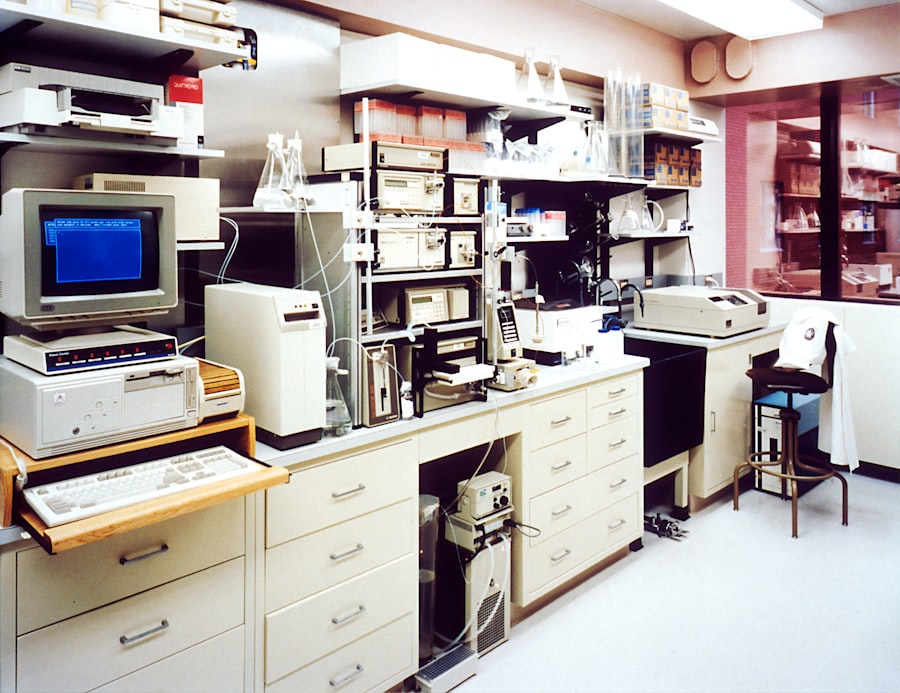Preclinical studies serve as a critical phase in the drug development process, acting as a bridge between laboratory research and clinical trials. These studies are designed to evaluate the safety, efficacy, and pharmacokinetics of new therapeutic agents before they are tested in humans. Typically conducted in vitro (in the lab) and in vivo (in living organisms), preclinical studies provide essential data that inform the design of clinical trials and help regulatory agencies assess the potential risks and benefits of new drugs.
The significance of this phase cannot be overstated, as it lays the groundwork for understanding how a drug interacts with biological systems and its potential therapeutic effects. The preclinical phase encompasses a variety of research activities, including the identification of drug candidates, optimization of formulations, and extensive testing for toxicity. Researchers utilize a range of methodologies to gather data on how a drug behaves in biological systems, which is crucial for predicting its performance in humans.
This stage is not only about confirming that a drug works but also about ensuring that it does so safely. The insights gained during preclinical studies are vital for making informed decisions about whether to advance a drug candidate into human trials, ultimately influencing the success or failure of new therapies.
Key Takeaways
- Preclinical studies are essential for assessing drug safety and efficacy before human trials.
- Various methods, including in vitro tests and animal models, are used to gather critical data.
- Animal models play a key role but present challenges related to biological differences and ethical concerns.
- Translating preclinical results to clinical trials requires careful interpretation to ensure human relevance.
- Future preclinical research aims to improve models, reduce animal use, and enhance predictive accuracy.
The Importance of Preclinical Studies in Drug Development
Preclinical studies play an indispensable role in drug development by providing a comprehensive understanding of a drug’s pharmacological profile. They help researchers identify the mechanisms of action, therapeutic windows, and potential side effects associated with new compounds. By establishing a foundational knowledge base, preclinical studies enable scientists to refine their hypotheses and design more effective clinical trials.
This phase is particularly important because it allows for the identification of promising candidates while minimizing the risk of failure in later stages, which can be costly and time-consuming. Moreover, preclinical studies contribute to regulatory compliance by generating data required for Investigational New Drug (IND) applications submitted to agencies like the U.S. Food and Drug Administration (FDA).
These studies must adhere to Good Laboratory Practice (GLP) guidelines, ensuring that the data generated is reliable and reproducible. Regulatory bodies rely heavily on preclinical findings to assess whether a drug is safe enough to proceed to human testing. The rigorous evaluation during this phase not only protects participants in clinical trials but also enhances public trust in the drug development process.
Methods and Techniques Used in Preclinical Studies
A variety of methods and techniques are employed during preclinical studies to assess the pharmacodynamics and pharmacokinetics of drug candidates. In vitro assays are commonly used to evaluate cellular responses to drugs, allowing researchers to study mechanisms of action at the molecular level. Techniques such as high-throughput screening enable the rapid assessment of thousands of compounds against specific biological targets, facilitating the identification of lead candidates for further development.
In vivo studies complement these in vitro findings by providing insights into how drugs behave within an entire organism. Animal models are often utilized to evaluate the pharmacokinetics—how a drug is absorbed, distributed, metabolized, and excreted—as well as its pharmacodynamics—how it affects biological systems. Advanced imaging techniques, such as positron emission tomography (PET) and magnetic resonance imaging (MRI), allow researchers to visualize drug distribution and effects in real-time within living subjects.
These methodologies collectively contribute to a robust understanding of a drug’s potential efficacy and safety profile.
Animal Models in Preclinical Studies
| Animal Model | Common Use | Advantages | Limitations | Typical Study Duration |
|---|---|---|---|---|
| Mouse | Genetic studies, cancer, immunology | Genetic similarity to humans, well-characterized genome, cost-effective | Small size limits some surgical procedures, differences in metabolism | 4-12 weeks |
| Rat | Neuroscience, toxicology, cardiovascular research | Larger size for surgical manipulation, well-studied physiology | Less genetic tools compared to mice, species-specific responses | 6-16 weeks |
| Rabbit | Ophthalmology, atherosclerosis, antibody production | Good for immunology studies, larger eye size for ocular research | Higher maintenance cost, less genetic information available | 8-20 weeks |
| Guinea Pig | Respiratory diseases, infectious disease models | Similar immune response to humans, useful for allergy studies | Limited genetic tools, slower reproduction rate | 6-12 weeks |
| Zebrafish | Developmental biology, toxicology, genetics | Transparent embryos, rapid development, high throughput screening | Less similar physiology to humans, aquatic environment | 1-4 weeks |
| Non-human Primate | Neuroscience, infectious diseases, vaccine development | Closest genetic similarity to humans, complex behavior studies | Ethical concerns, high cost, long lifespan | Several months to years |
Animal models are integral to preclinical studies, providing a living system that closely mimics human physiology and disease states. Rodents, particularly mice and rats, are the most commonly used species due to their genetic similarity to humans, short life cycles, and well-characterized biology. These models allow researchers to study disease progression and treatment responses in a controlled environment, offering valuable insights into how a drug may perform in humans.
Beyond rodents, larger animal models such as dogs, pigs, and non-human primates are also employed when necessary. These species can provide more relevant data for certain types of diseases or therapeutic interventions due to their closer anatomical and physiological similarities to humans. For instance, non-human primates are often used in studies involving neurological disorders or complex immune responses because their brain structure and immune systems share significant similarities with those of humans.
The choice of animal model is critical; it must align with the specific objectives of the study while also considering ethical implications and regulatory requirements.
Challenges and Limitations in Preclinical Studies
Despite their importance, preclinical studies face numerous challenges and limitations that can impact their effectiveness. One significant issue is the translational gap between animal models and human physiology. While animal studies provide valuable insights, they do not always accurately predict human responses due to differences in metabolism, genetics, and disease manifestation.
This discrepancy can lead to failures in clinical trials when drugs that appeared promising in preclinical studies do not yield similar results in human subjects. Another challenge lies in the ethical considerations surrounding animal research. The use of animals in preclinical studies raises questions about welfare and humane treatment.
Researchers must navigate complex ethical guidelines while striving to minimize animal suffering and ensure that their use is justified by potential benefits. Additionally, there is an ongoing push for alternative methods that could reduce or replace animal testing altogether, such as organ-on-a-chip technologies or advanced computational models. However, these alternatives are still under development and may not yet provide the comprehensive data needed for regulatory approval.
Translating Preclinical Findings to Clinical Trials

The transition from preclinical studies to clinical trials is a critical juncture in drug development. Successful translation requires careful consideration of the data generated during preclinical research, including safety profiles, dosing regimens, and potential side effects. Researchers must design clinical trials that reflect the insights gained from preclinical studies while also addressing the complexities of human biology.
One key aspect of this translation process is the selection of appropriate endpoints for clinical trials. These endpoints must be based on preclinical findings that indicate how a drug is expected to perform in humans. For example, if preclinical studies suggest that a drug effectively reduces tumor size in animal models, clinical trials may focus on similar outcomes as primary endpoints.
However, researchers must also remain flexible; unexpected results may necessitate adjustments to trial designs or endpoints based on real-time data collected during the study.
Ethical Considerations in Preclinical Studies
Ethical considerations are paramount in preclinical research, particularly regarding the use of animal models. Researchers are obligated to adhere to ethical guidelines that prioritize animal welfare while ensuring scientific integrity. The principles of the 3Rs—Replacement, Reduction, and Refinement—serve as guiding tenets for ethical research practices.
Replacement encourages finding alternatives to animal testing whenever possible; reduction emphasizes minimizing the number of animals used; and refinement focuses on enhancing animal welfare by improving experimental procedures. In addition to animal welfare concerns, researchers must also consider the implications of their findings on public health and safety. Transparency in reporting results is essential for maintaining public trust in scientific research.
This includes disclosing both positive and negative outcomes from preclinical studies, as well as any potential conflicts of interest that may arise during the research process. Ethical conduct not only fosters responsible research practices but also contributes to the overall credibility of the scientific community.
Future Directions in Preclinical Research
The future of preclinical research is poised for significant advancements driven by technological innovations and evolving scientific paradigms. One promising direction is the integration of artificial intelligence (AI) and machine learning into preclinical studies. These technologies can analyze vast datasets more efficiently than traditional methods, identifying patterns that may not be immediately apparent to human researchers.
AI can assist in predicting drug interactions, optimizing dosing regimens, and even identifying potential side effects before they occur. Additionally, advancements in organ-on-a-chip technology hold great promise for reducing reliance on animal models while providing more accurate representations of human physiology. These microfluidic devices can simulate human organ systems at a cellular level, allowing researchers to study drug responses in a controlled environment without using live animals.
As these technologies continue to develop, they may revolutionize preclinical research by providing more reliable data while addressing ethical concerns associated with animal testing. The landscape of preclinical research is evolving rapidly, with an increasing emphasis on personalized medicine approaches that tailor treatments based on individual genetic profiles. This shift necessitates more sophisticated preclinical models that can accurately reflect human variability in response to therapies.
As researchers continue to explore these innovative avenues, the potential for more effective and safer drugs entering clinical practice will expand significantly, ultimately benefiting patients worldwide.




